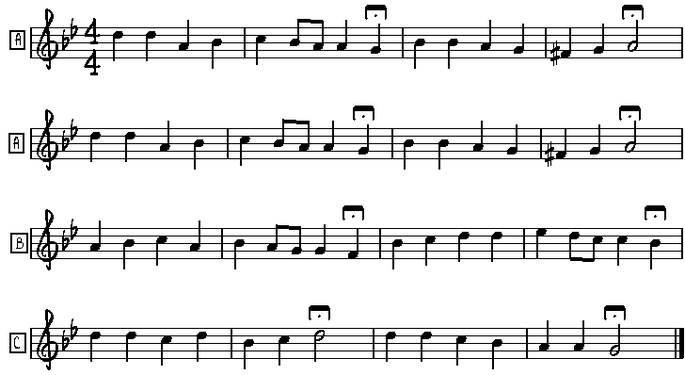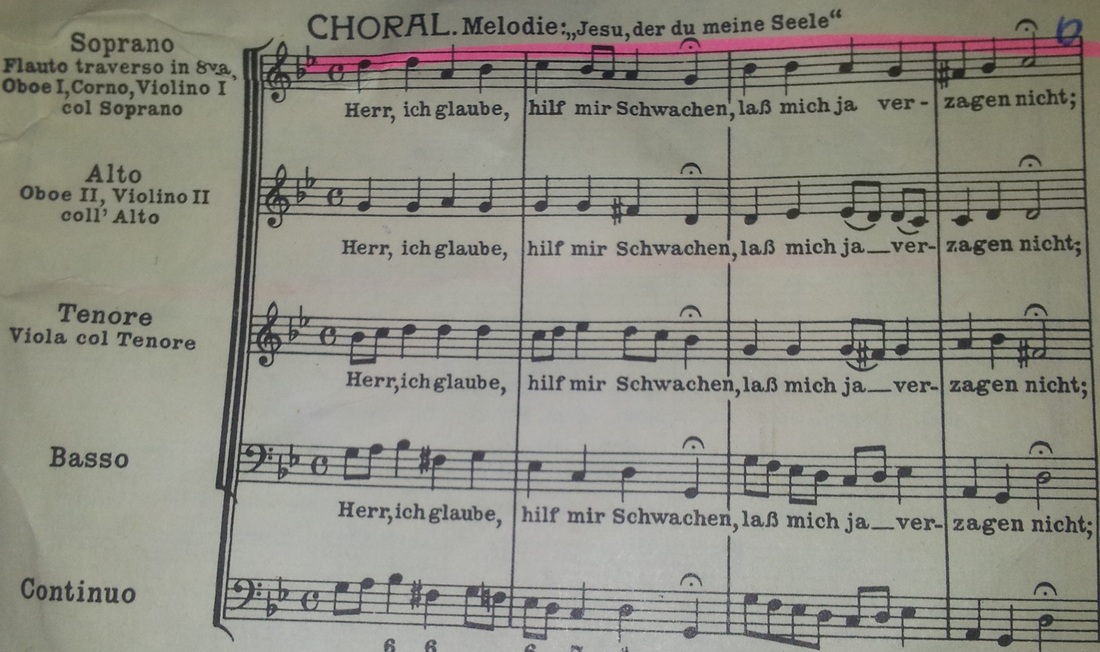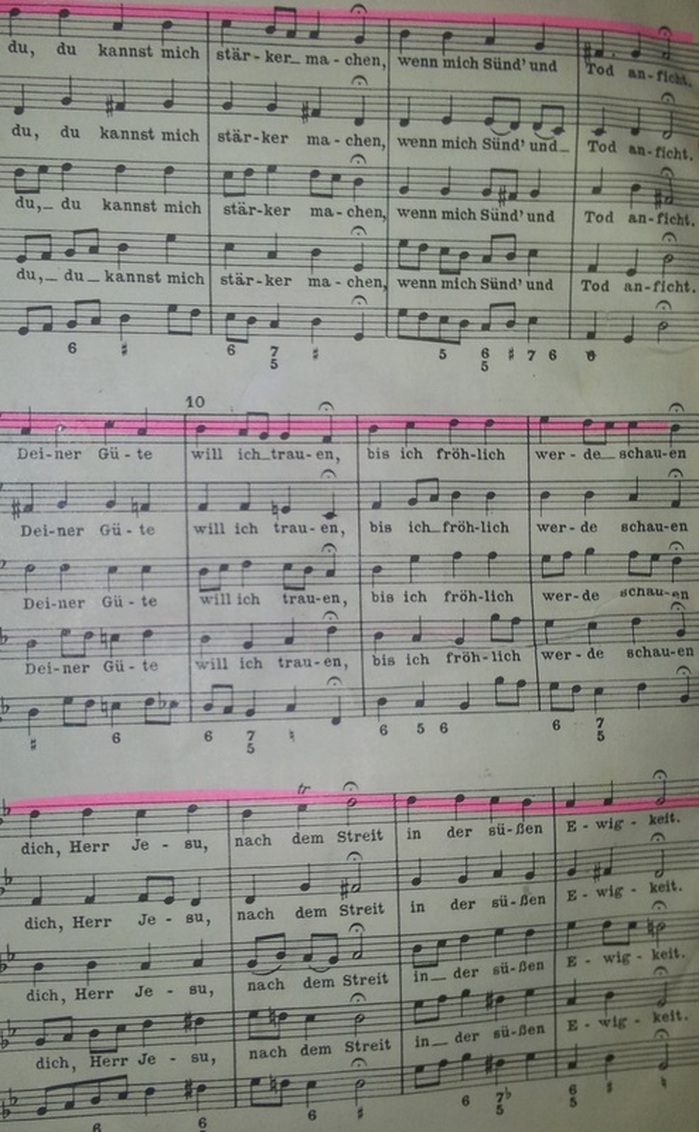7th Movement - Chorale "Jesu Der Du Meine Seele"
The last movement may seem like a strange place to begin, but this is where the Cantata gets its name. "Jesu Der Du Meine Seele" is a Chorale, i.e. a Hymn tune of the LutheranChurch. The 7th movement is one verse of this hymn harmonised by Bach. Learn it!(Soprano tune). This hymn tune also features prominantly in the 1st movement, and so is an important theme. As with all traditional hymns, the texture is mainly homophonic. There are no orchestral parts as such. The instruments play whichever line of the hymn is best suited to their range.
Form and Tonality
It consists of 8, 2-bar phrases in 4/4 time, where the 3rd and 4th are a repeat of 1 and 2, (I usually prefer to consider it as 4, 4-bar phrases). If this is the exam excerpt, there wouldn’t be many questions possible, so it’s very likely to be asked keys, chords and cadences. Note the Tierce di Picardie at the end, a chord of G major even though it’s in Gm, a typical Baroque device.
Key - Gminor (the main key of the entire Cantata)
Cadence Bar 4 - Imperfect (ends on chord V)
Cadence Bar 8 - Imperfect (ends on chord V)
Bars 9 and 10 are in F major ending on Perfect Cadence in F
Bars 11 and 12 are a sequence of the previous 2 bars in Bb, again ending on a perfect cadence.
Bar 16. The hymn ends with a chord of G major (tierce di picardie)
It consists of 8, 2-bar phrases in 4/4 time, where the 3rd and 4th are a repeat of 1 and 2, (I usually prefer to consider it as 4, 4-bar phrases). If this is the exam excerpt, there wouldn’t be many questions possible, so it’s very likely to be asked keys, chords and cadences. Note the Tierce di Picardie at the end, a chord of G major even though it’s in Gm, a typical Baroque device.
Key - Gminor (the main key of the entire Cantata)
Cadence Bar 4 - Imperfect (ends on chord V)
Cadence Bar 8 - Imperfect (ends on chord V)
Bars 9 and 10 are in F major ending on Perfect Cadence in F
Bars 11 and 12 are a sequence of the previous 2 bars in Bb, again ending on a perfect cadence.
Bar 16. The hymn ends with a chord of G major (tierce di picardie)



